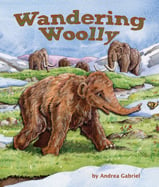Alignment to CORE and NGSS Standards

| Grade | Number | Standard |
|---|---|---|
| 1 | NGSS: 1-LS1.B | Adult plants and animals can have young. In many kinds of animals, parents and the offspring themselves engage in behaviors that help the offspring to survive. (1-LS1-2) |
| 1 | RI.1.9 | Identify basic similarities in and differences between two texts on the same topic. (story versus For Creative Minds non-fiction component) |
| 1 | RL.1.5 | Explain major differences between books that tell stories and books that give information, (paired fiction & For Creative Minds non-fiction) |
| 2 | L.2.1a | Use collective nouns (e.g., group). |
| 2 | NGSS: 2-LS4.D | There are many different kinds of living things in any area, and they exist in different places on land and in water. Classification (2-LS4-1) |
| 2 | RF.2.4a-Lexile Level | Read grade-level text with purpose and understanding. Lexile Level 420L - 820L |
| 2 | RI.2.10-Lexile Level | By the end of year, read and comprehend informational texts, including history/social studies, science, and technical texts, in the grades 2_3 text complexity band proficiently, with scaffolding as needed at the high end of the range. Lexile Level 420L - 820L |
| 2 | RL.2.10-Lexile Level | By the end of the year, read and comprehend literature, including stories and poetry, in the grades 2_3 text complexity band proficiently, with scaffolding as needed at the high end of the range. Lexile Level 420L - 820L |
| 3 | L.3.6 | Acquire and use accurately grade-appropriate domain-specific words and phrases: Weather prediction, weather versus climate, natural hazards, life cycles, changing environments: organisms survive/move/adapt/die, animal group behavior, inherited traits, instinct/learned behavior, extinct animals, fossils, individual advantages survival/mating, habitat survival: physical/behavioral adaptations, living things change habitats, force/motion: strength/direction/electric/magnetic, multiplication/division, unknown number m/d equation, m/d fact families, two-step word problems, place value rounding, fractions, time to minute, liquid volumes, scaled picture graph/bar graph, measurements to fractional inches, line plot, area, square units, area=multiplication/division, perimeter, shapes in different categories (rhombus/rectangle=quadrilateral), divide shapes by equal area, fables/folktales/myths from diverse cultures, compare/contrast stories from same author/series, |
| 3 | NGSS: 3-LS2.D | Being part of a group helps animals obtain food, defend themselves, and cope with changes. Groups may serve different functions and vary dramatically in size. (3-LS2-1) |
| 3 | NGSS: 3-LS4.A-1 | Some kinds of plants and animals that once lived on Earth are no longer found anywhere. (Note: moved from K-2) (3-LS4-1) |
| 3 | NGSS: 3-LS4.A-2 | Fossils provide evidence about the types of organisms that lived long ago and also about the nature of their environments. (3-LS4-1) |
| 3 | RI.3.3 | Describe the relationship between a series of historical events, scientific ideas or concepts, or steps in technical procedures in a text, using language that pertains to time, sequence, and cause/effect. |
| 3 | RI.3.4 | Determine the meaning of general academic and domain-specific words and phrases in a text relevant to a grade 3 topic or subject area: Weather prediction, weather versus climate, natural hazards, life cycles, changing environments: organisms survive/move/adapt/die, animal group behavior, inherited traits, instinct/learned behavior, extinct animals, fossils, individual advantages survival/mating, habitat survival: physical/behavioral adaptations, living things change habitats, force/motion: strength/direction/electric/magnetic, multiplication/division, unknown number m/d equation, m/d fact families, two-step word problems, place value rounding, fractions, time to minute, liquid volumes, scaled picture graph/bar graph, measurements to fractional inches, line plot, area, square units, area=multiplication/division, perimeter, shapes in different categories (rhombus/rectangle=quadrilateral), divide shapes by equal area, fables/folktales/myths from diverse cultures, compare/contrast stories from same author/series, |
| 4 | NGSS: 4-ESS1.C | Local, regional, and global patterns of rock formations reveal changes over time due to earth forces, such as earthquakes. The presence and location of certain fossil types indicate the order in which rock layers were formed. (4-ESS1-1) |